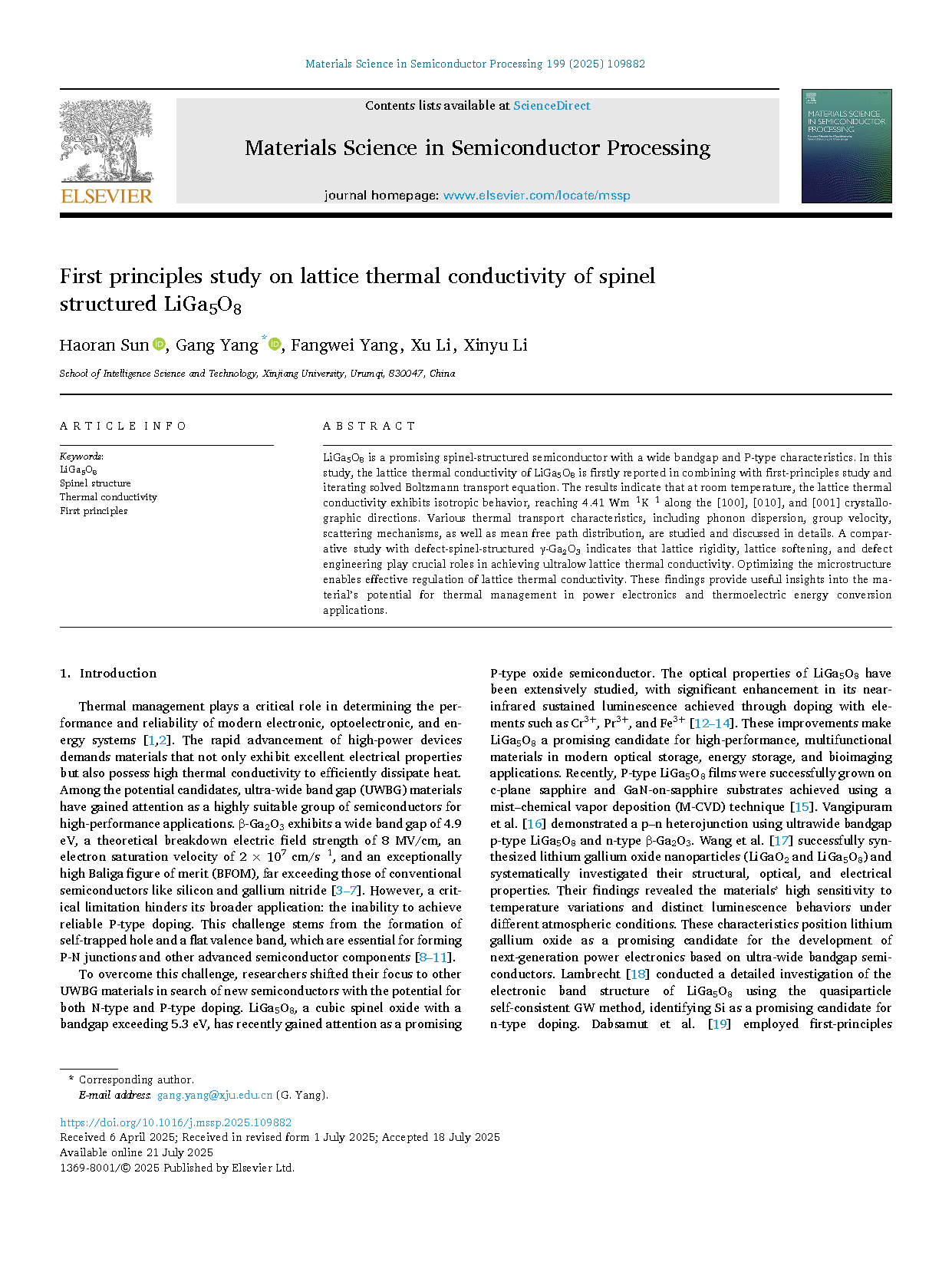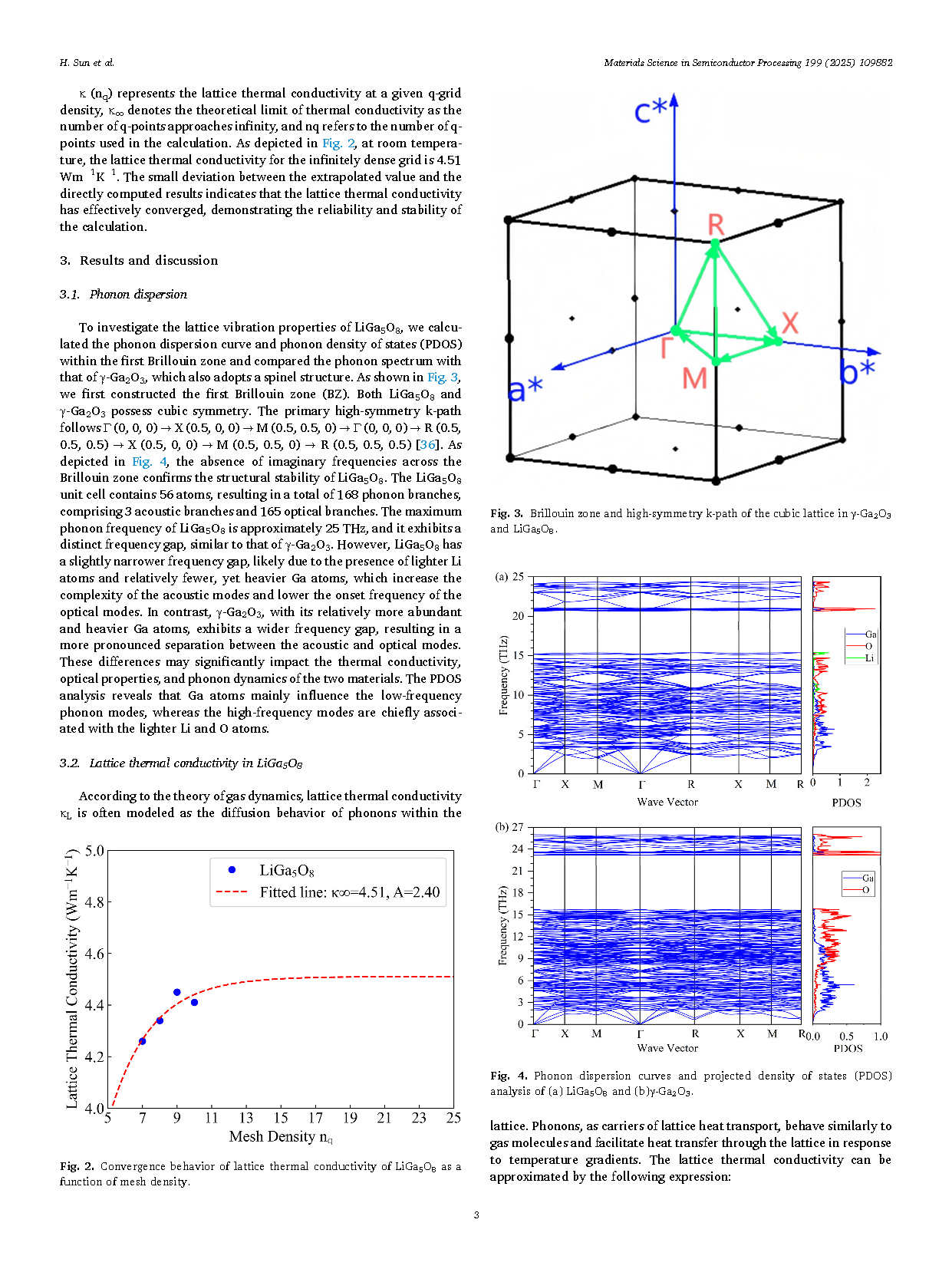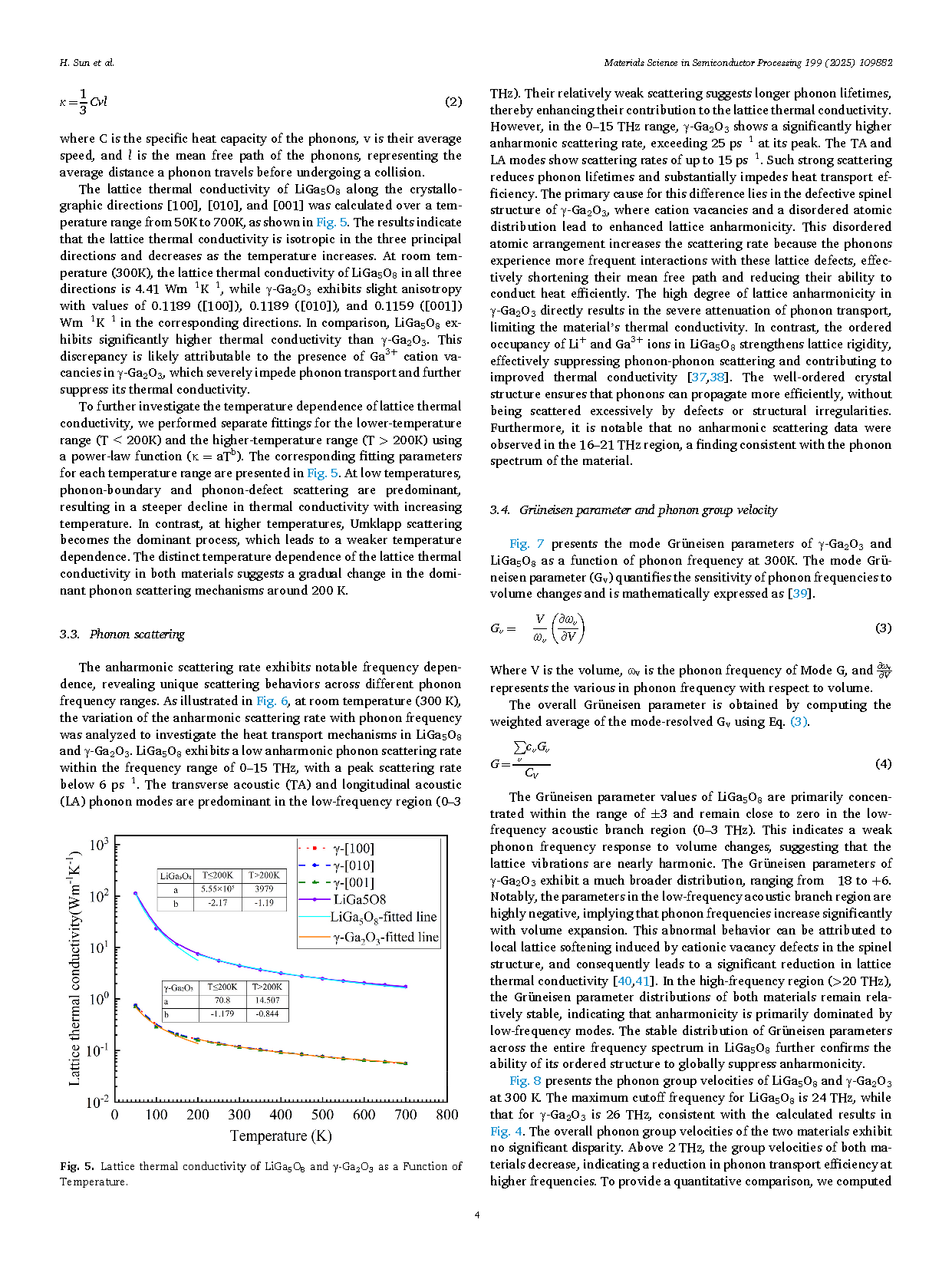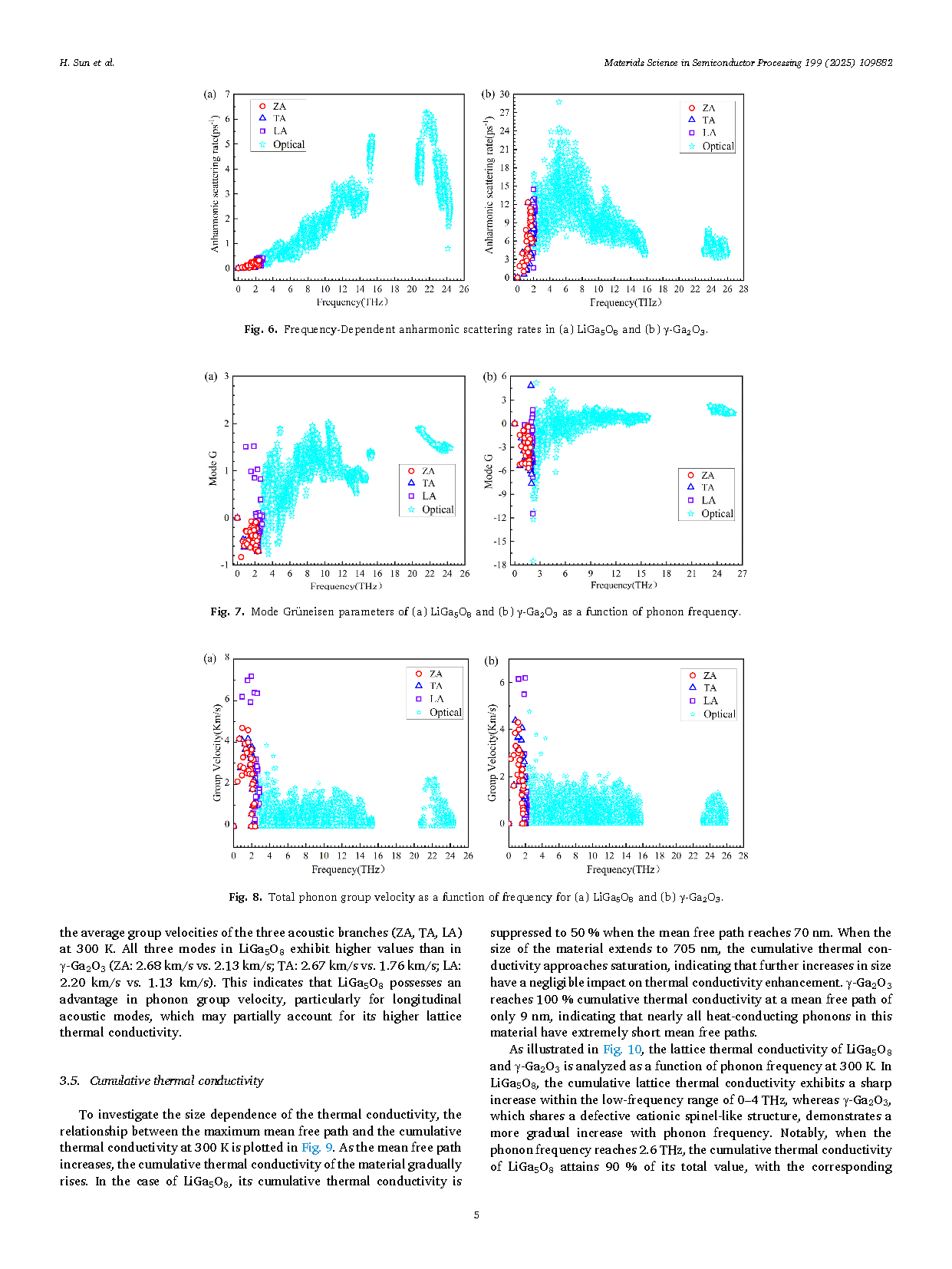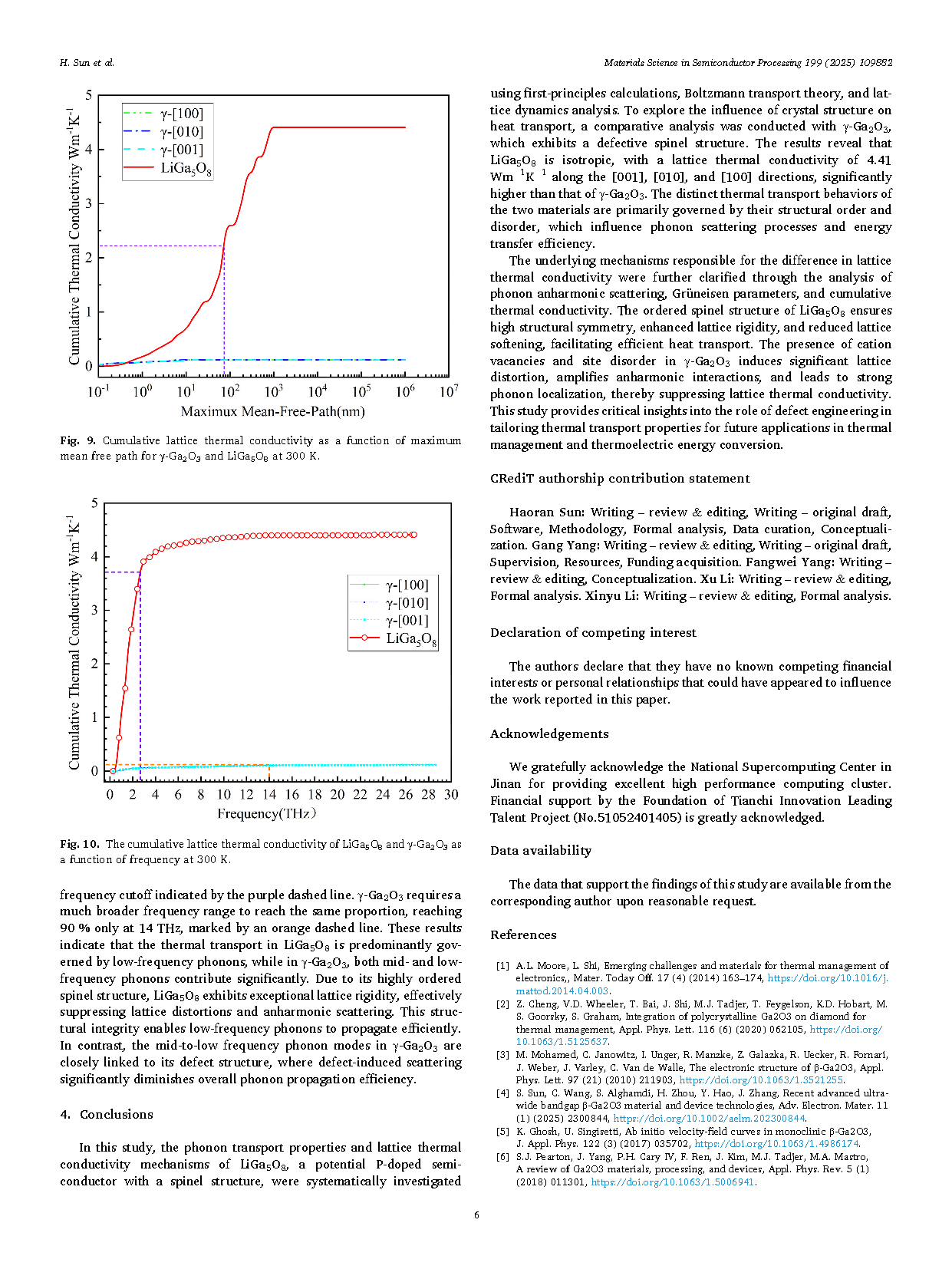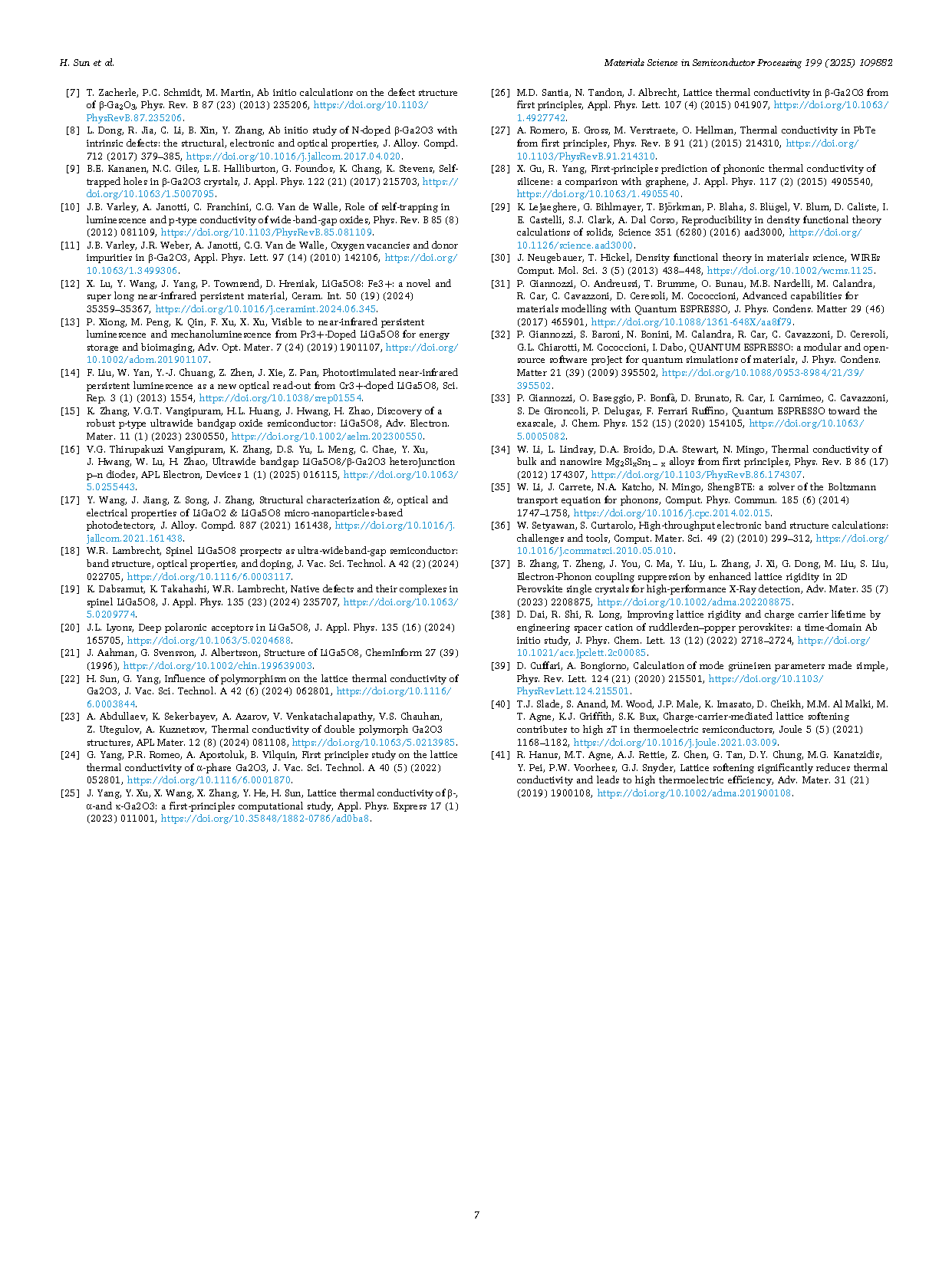
【Domestic Papers】First principles study on lattice thermal conductivity of spinel structured LiGa₅O₈
日期:2025-07-29阅读:134
Researchers from the Xinjiang University have published a dissertation titled " First principles study on lattice thermal conductivity of spinel structured LiGa5O8" in Materials Science in Semiconductor Processing.
Project Support
We gratefully acknowledge the National Supercomputing Center in Jinan for providing excellent high performance computing cluster. Financial support by the Foundation of Tianchi Innovation Leading Talent Project (No.51052401405) is greatly acknowledged.
Background
Thermal management plays a critical role in determining the performance and reliability of modern electronic, optoelectronic, and energy systems. The rapid advancement of high-power devices demands materials that not only exhibit excellent electrical properties but also possess high thermal conductivity to efficiently dissipate heat. Among the potential candidates, ultra-wide band gap (UWBG) materials have gained attention as a highly suitable group of semiconductors for high-performance applications. β-Ga2O3 exhibits a wide band gap of 4.9 eV, a theoretical breakdown electric field strength of 8 MV/cm, an electron saturation velocity of 2 × 107 cm/s−1, and an exceptionally high Baliga figure of merit (BFOM), far exceeding those of conventional semiconductors like silicon and gallium nitride. However, a critical limitation hinders its broader application: the inability to achieve reliable P-type doping. This challenge stems from the formation of self-trapped hole and a flat valence band, which are essential for forming P-N junctions and other advanced semiconductor components.
Abstract
LiGa5O8 is a promising spinel-structured semiconductor with a wide bandgap and P-type characteristics. In this study, the lattice thermal conductivity of LiGa5O8 is firstly reported in combining with first-principles study and iterating solved Boltzmann transport equation. The results indicate that at room temperature, the lattice thermal conductivity exhibits isotropic behavior, reaching 4.41 Wm−1K−1 along the [100], [010], and [001] crystallographic directions. Various thermal transport characteristics, including phonon dispersion, group velocity, scattering mechanisms, as well as mean free path distribution, are studied and discussed in details. A comparative study with defect-spinel-structured γ-Ga2O3 indicates that lattice rigidity, lattice softening, and defect engineering play crucial roles in achieving ultralow lattice thermal conductivity. Optimizing the microstructure enables effective regulation of lattice thermal conductivity. These findings provide useful insights into the material's potential for thermal management in power electronics and thermoelectric energy conversion applications.
Conclusions
In this study, the phonon transport properties and lattice thermal conductivity mechanisms of LiGa5O8, a potential P-doped semiconductor with a spinel structure, were systematically investigated using first-principles calculations, Boltzmann transport theory, and lattice dynamics analysis. To explore the influence of crystal structure on heat transport, a comparative analysis was conducted with γ-Ga2O3, which exhibits a defective spinel structure. The results reveal that LiGa5O8 is isotropic , with a lattice thermal conductivity of 4.41 Wm− 1 K− 1 along the [001], [010], and [100] directions, significantly higher than that of γ-Ga2O3. The distinct thermal transport behaviors of the two materials are primarily governed by their structural order and disorder, which influence phonon scattering processes and energy transfer efficiency.
The underlying mechanisms responsible for the difference in lattice thermal conductivity were further clarified through the analysis of phonon anharmonic scattering, Grüneisen parameters, and cumulative thermal conductivity. The ordered spinel structure of LiGa5O8 ensures high structural symmetry, enhanced lattice rigidity, and reduced lattice softening, facilitating efficient heat transport. The presence of cation vacancies and site disorder in γ-Ga2O3 induces significant lattice distortion, amplifies anharmonic interactions, and leads to strong phonon localization, thereby suppressing lattice thermal conductivity. This study provides critical insights into the role of defect engineering in tailoring thermal transport properties for future applications in thermal management and thermoelectric energy conversion.
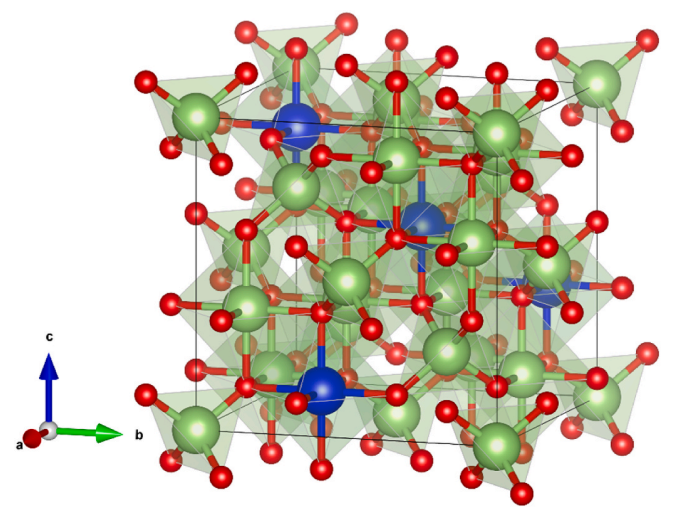
Fig. 1. Crystal structure of LiGa5O8. The Ga atoms are represented in green, the Li atoms in blue, and the O atoms in red.
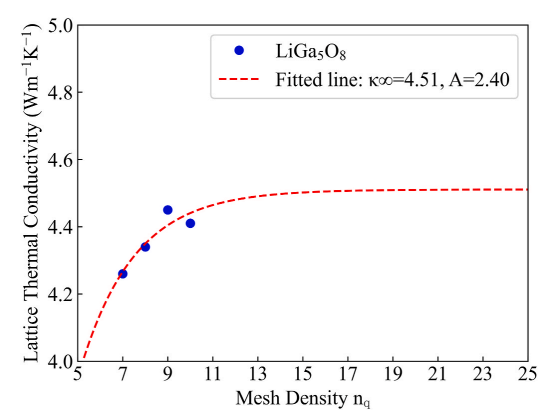
Fig. 2. Convergence behavior of lattice thermal conductivity of LiGa5O8 as a function of mesh density.
DOI:
doi.org/10.1016/j.mssp.2025.109882
